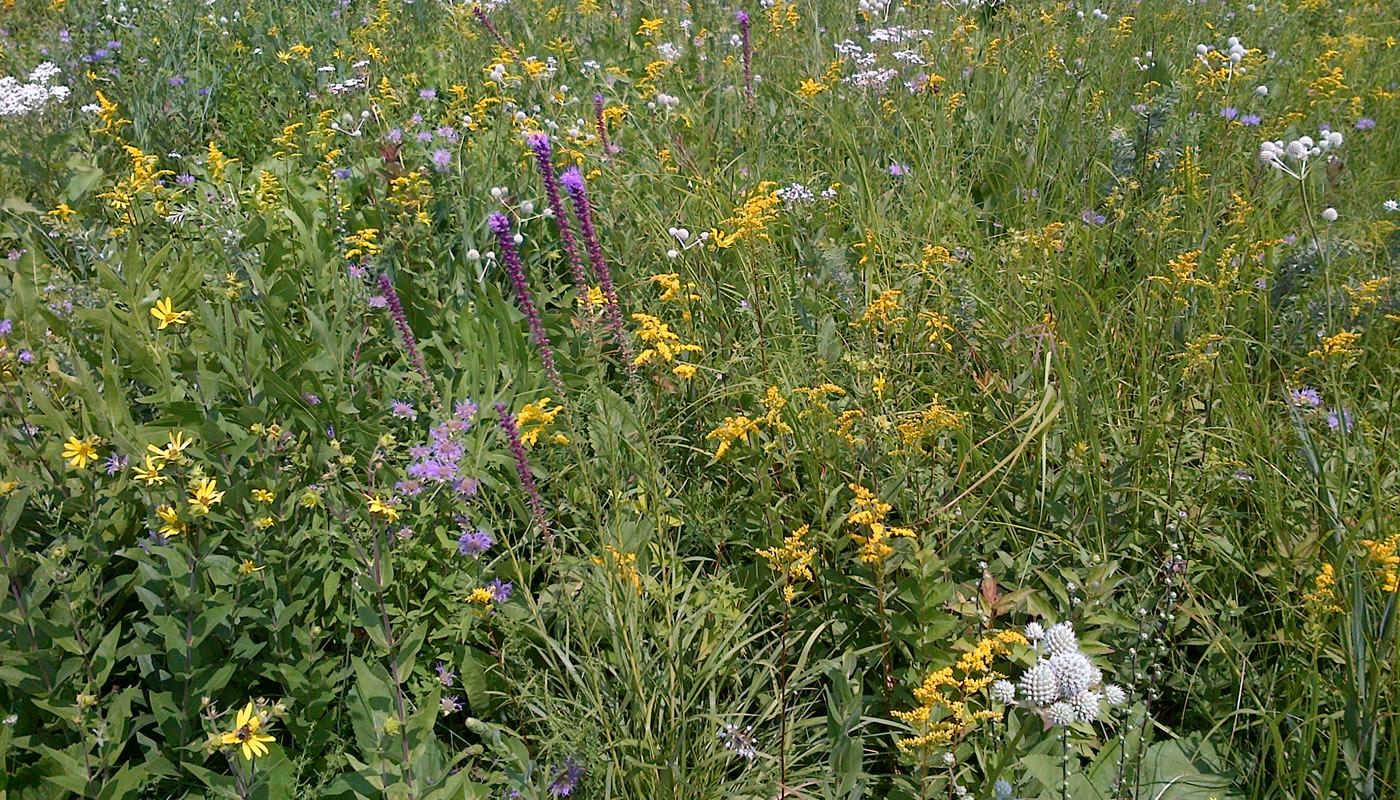The Forest Preserves has strategically reduced mowing since the early 2000s, allowing these lands to return to a more natural state. In 2016, we formalized this program into the Growing, Not Mowing initiative to better inform residents about the benefits of reduced mowing.
Frequently Asked Questions
How many acres will be included in the Growing, Not Mowing initiative?
The initiative launched in June 2016, with the Forest Preserves of Cook County designating 116.9 acres as No Mow Zones for the Growing, Not Mowing initiative.
How were the No Mow Zones selected?
No Mow Zones were recommended based on their condition following rainstorms and their ability to provide ecological services. The majority of the locations retain an abundance of water, creating soft, spongy, and ultimately muddy turf areas. These locations that retain storm water create potentially hazardous situations for District employees and equipment.
The selected areas will also provide improved ecological services like greater water holding capacity and habitat for flora and fauna, particular plants, insects, birds and small mammals. Additionally, most of the No Mow Zones were selected based on their infrequent public use.
Are the No Mow Zones eliminating any Picnic Groves?
Some of the recommended No Mow Zones included Picnic Groves; however, recommendations included where the affected Picnic Groves could be shifted. The amount of available Picnic Groves in the Forest Preserves will not be impacted by the addition of No Mow Zones.
Will there be any maintenance done to the No Mow Zones?
The Resource Management and Landscape Maintenance departments are working together to analyze a rotational mowing schedule to prevent woody vegetation from encroaching on the areas where applicable. There are many areas throughout the Forest Preserves that this maintenance activity is applied already. No Mow Zones adjacent to ecological land management sites may be included in current restoration activities at those locations.
Additionally, the Landscape Maintenance department will continue to mow around the perimeter of No Mow Zones to maintain trail user safety and sight line visibility where necessary.
Will the Growing, Not Mowing initiative impact the Forest Preserves’ budget?
By reducing mowing through the Growing, Not Mowing initiative, the Forest Preserves’ Landscape Maintenance department will be able to reallocate employees to other areas. As the Forest Preserves continues to acquire more land, as well as introduce new amenities for the public’s enjoyment, the new No Mow Zones will ensure the busiest locations in which the public interacts are kept neat, clean and safe for use.
What are the additional benefits of the Growing, Not Mowing initiative?
By designating No Mow Zones, the Forest Preserves of Cook County is able to increase habitat for insects, plants and wildlife, and improve air quality by reducing CO2 emissions emitted by propane and diesel power mowers.

